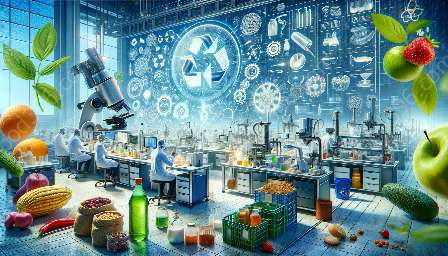As food processing, science, and technology play a pivotal role in food production, understanding food safety and sanitation is imperative to ensure the quality and safety of food products. This article covers the key aspects of food safety and sanitation in relation to food processing, with a focus on best practices and industry standards.
The Importance of Food Safety and Sanitation
Food safety and sanitation are essential components of the food industry, ensuring that the food products reaching consumers are free from contamination, spoilage, and other hazards. In the context of food processing, maintaining high standards of food safety and sanitation is critical to prevent the introduction and spread of foodborne illnesses, preserve product quality, and comply with regulatory requirements.
Understanding Food Safety in Food Processing
Food safety in food processing encompasses the practices and procedures implemented to prevent microbiological, chemical, and physical hazards that can compromise the safety and quality of food products. This involves implementing robust measures for personal hygiene, sanitation, and environmental control to minimize the risk of contamination throughout the production process.
Sanitation Practices in Food Processing
Sanitation in food processing involves the thorough cleaning and maintenance of equipment, facilities, and production environments to eliminate pathogens, allergens, and other potential hazards. It includes the use of cleaning agents, sanitizers, and disinfectants to ensure the hygienic conditions of food processing facilities and prevent cross-contamination.
Food Safety and Technology
The integration of technology in food processing has revolutionized food safety practices, enabling advanced monitoring and control systems to enhance food safety and sanitation. Innovations such as high-pressure processing, automated cleaning systems, and rapid microbial detection methods have significantly contributed to ensuring the safety and quality of food products.
Role of Food Science in Ensuring Food Safety
Food science plays a crucial role in understanding the numerous factors that affect food safety, including food composition, microbial activity, and storage conditions. Through research and development, food scientists work on improving food safety protocols, developing innovative preservation techniques, and conducting risk assessments to address emerging food safety challenges.
Ensuring Compliance with Food Safety Standards
Food processing facilities are required to adhere to strict food safety standards and regulations established by local and international authorities. These standards encompass a wide range of aspects, including hazard analysis, critical control points (HACCP), good manufacturing practices (GMP), and preventive controls to mitigate food safety risks.
Best Practices for Food Safety and Sanitation
- Implementing rigorous hygiene and handwashing protocols for personnel working in food processing facilities.
- Regular inspection and maintenance of equipment to ensure proper functioning and cleanliness.
- Establishing effective sanitation schedules and procedures for thorough cleaning of production areas and equipment.
- Conducting microbial testing and monitoring to verify the effectiveness of sanitation practices and detect potential issues.
Training and Education
Continuous training and education of personnel involved in food processing are crucial for promoting a culture of food safety and sanitation. This encompasses providing comprehensive training on hygiene practices, sanitation protocols, and compliance with food safety regulations to enhance awareness and ensure consistent adherence to best practices.
Conclusion
Food safety and sanitation form the cornerstone of food processing, science, and technology, ensuring the delivery of safe, wholesome, and high-quality food products to consumers. By integrating effective food safety and sanitation practices, utilizing advanced technologies, and prioritizing compliance with industry standards, food processing facilities can uphold the highest levels of food safety and quality.

